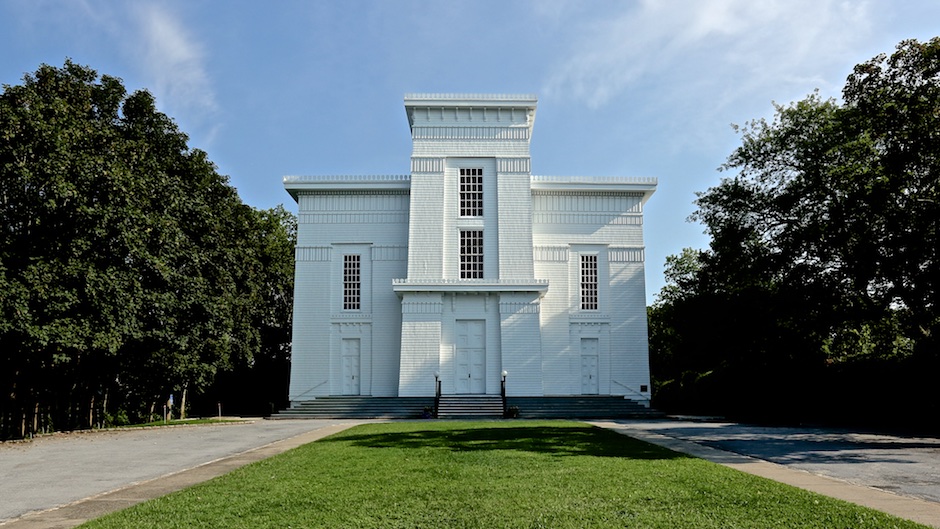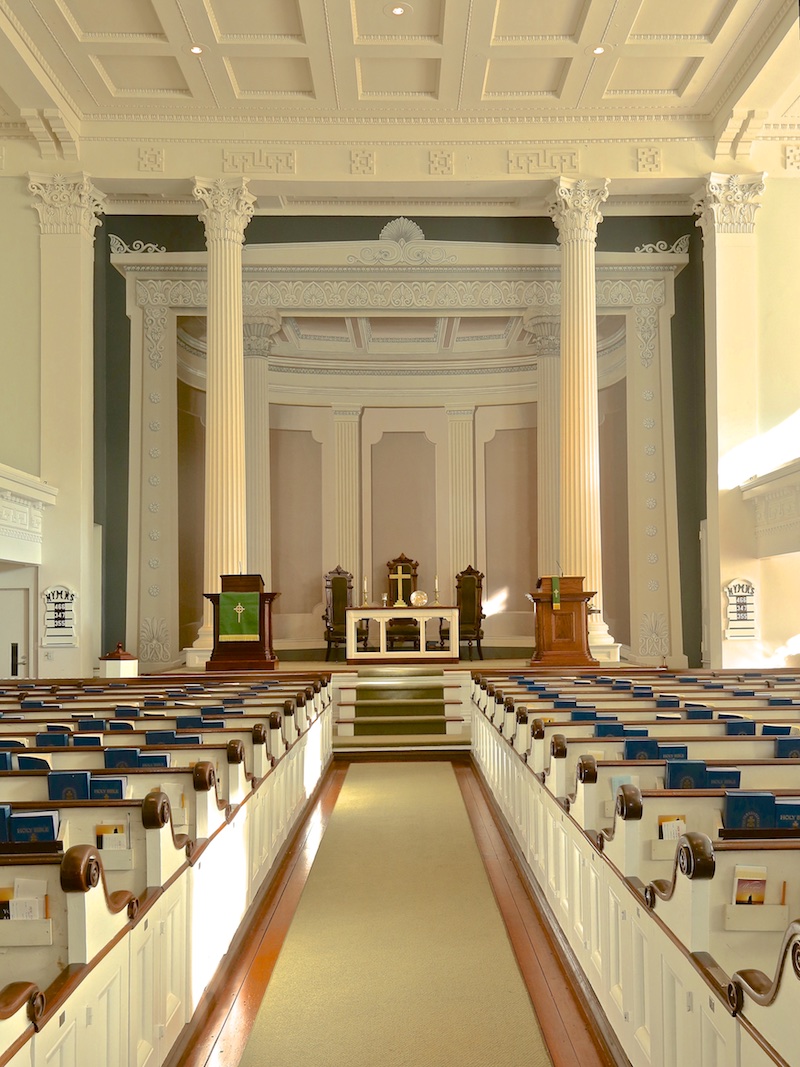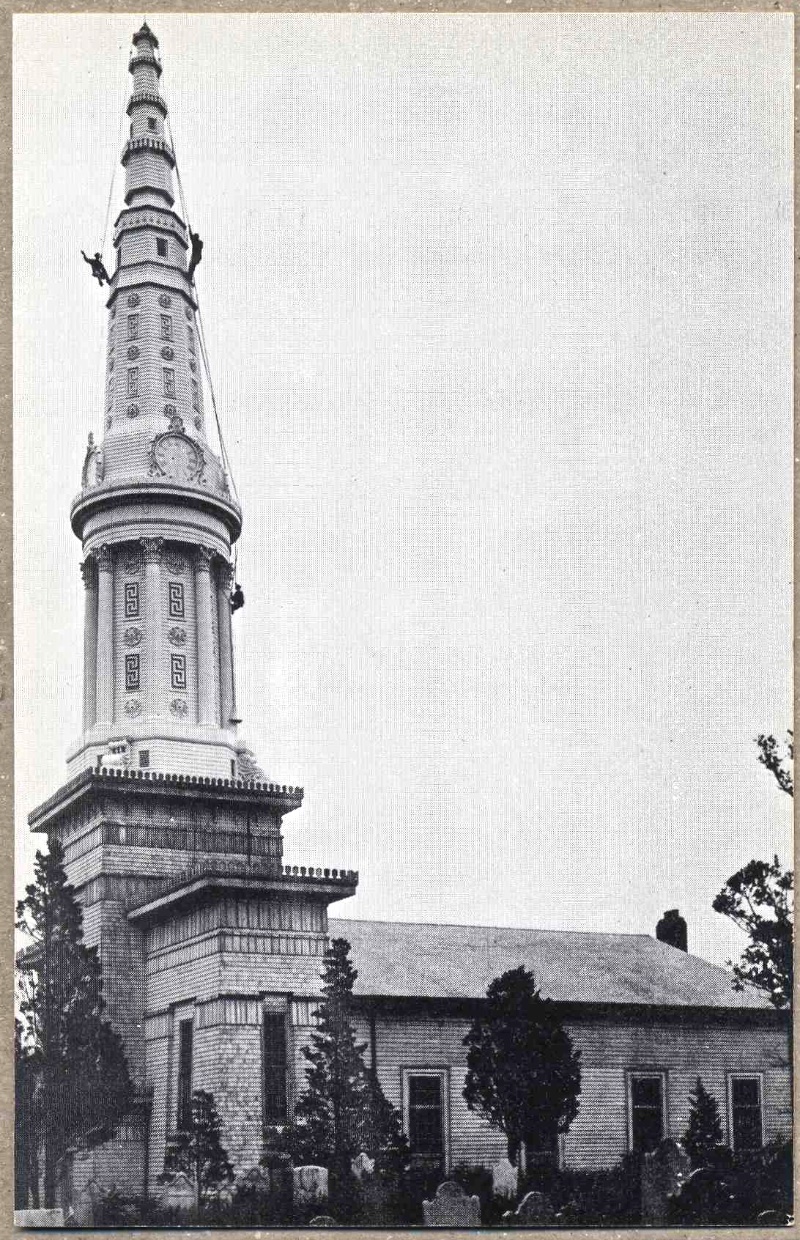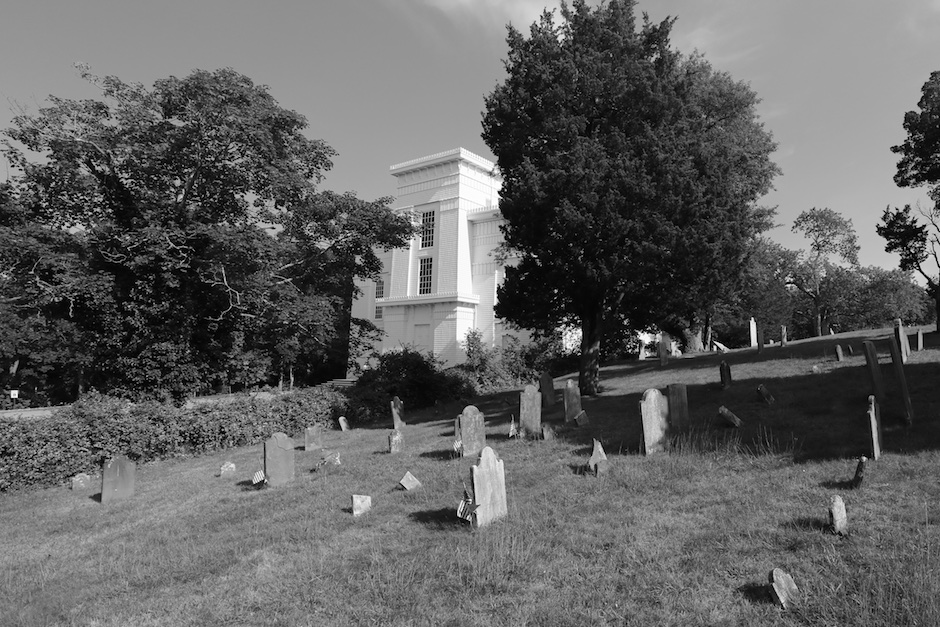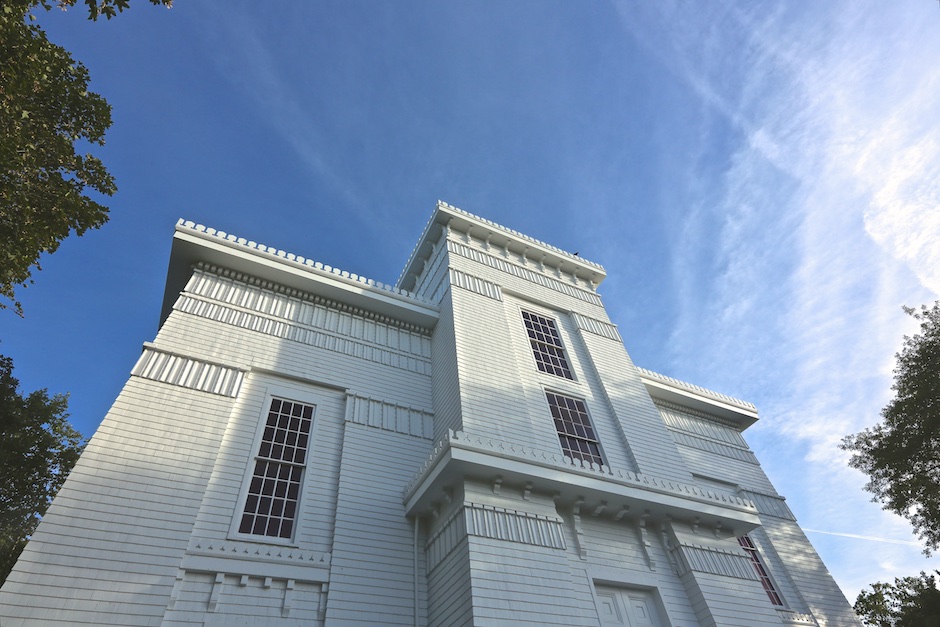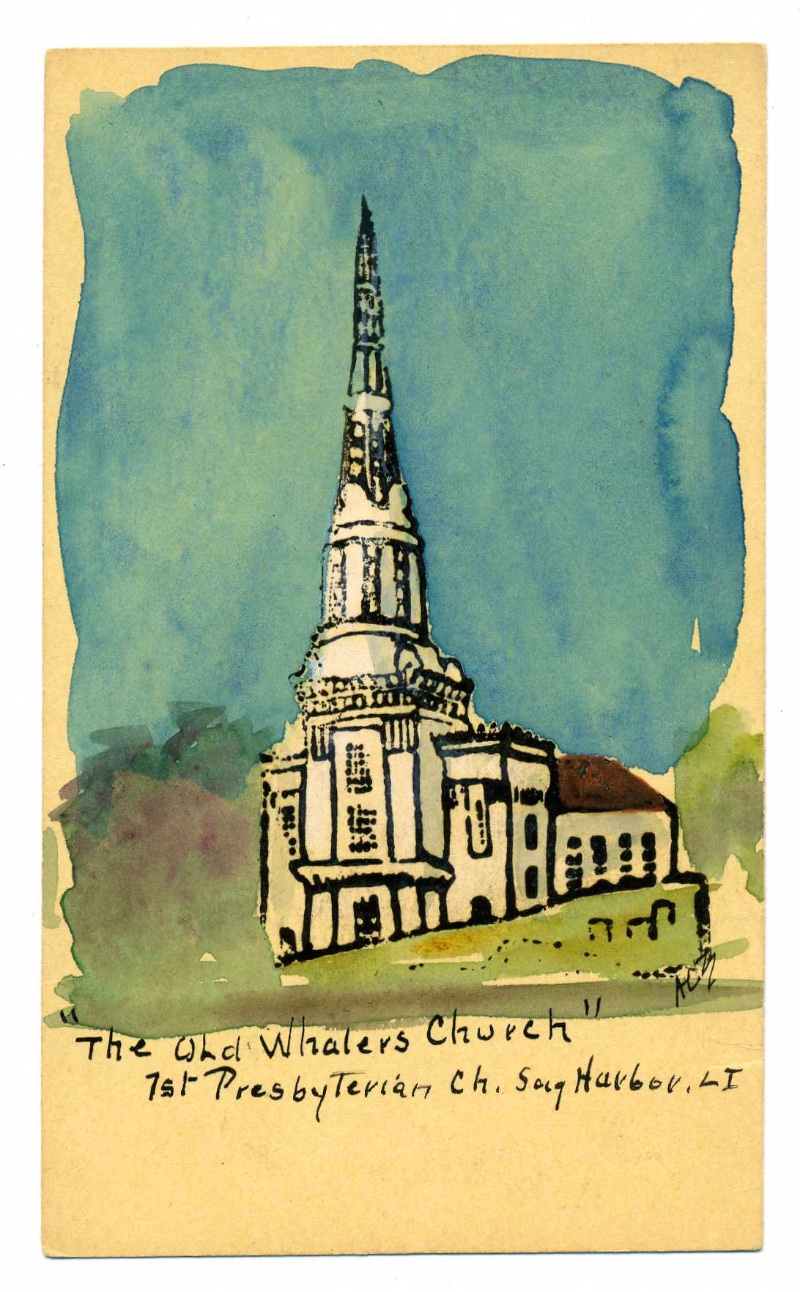 OLD WHALERS’ CHURCH, 1844
OLD WHALERS’ CHURCH, 1844
First Presbyterian Church, Sag Harbor
44 Union Street, Sag Harbor
A great religious revival in 1842 had started a movement to build a new church. Wealthy shipowners, captains, local businessmen and church members of lesser means supported the effort.
Sag Harbor was at the height of its prosperity in the 1840s. Sixty-three whaling ships called this home port and over 1,800 men were employed in the whaling industry, which brought millions of dollars to the village.
Minard Lafever, one of the nation’s leading architects, was commissioned to design the building. The property was bought for $2,000 and the building, without furnishings, cost $ 17,000. The church was dedicated on May 16, 1844, and is on the National Register of Historic Places. In 1994, the church was named a National Historic Landmark by the U.S. Department of the Interior.
The facade is considered probably the most important example of Egyptian Revival style in the United States today. As you approach the building, you see a massive, truncated wooden tower, square at the base and tapering to the top, flanked on either side by two similar, though broader and slightly lower, winged pylons. The cornices are decorated with a delicate edging of carvings in the shape of blubber spades, a tool used to flense the flubber from whales.
An uncovered porch runs the width of the facade. Opening onto it are three narrow, story-high paneled doors, one in the tower and one in each pylon. Above each door is a tall window of translucent and faintly lavender small-paned glass.
Near the sidewalk on Union Street stands an unusual fence with obelisk-shaped fenceposts. It is a copy of the original which had been removed in the 1880s.
The steeple, lost in the 1938 hurricane, stood 185 feet high and could be seen miles away at sea, the first sight of home for returning sailors. There were three sections, tapering upwards. The lowest section was an octagonal colonnade in the Greek Revival style and contained the bell. The second section, made of carved panels with alternating rosettes and the ancient key motif, a symbol of good luck, had four clock faces at the base facing north, east, south and west. The clockworks were made by Ephraim Byram, the famed Sag Harbor clockmaker. Installed in 1845, it was removed in 1846 as vibrations caused by high winds interfered with its proper functioning. The slender top section ended in a weathervane.
The Interior
The doors in the narthex carry out the Egyptian theme with tapering moldings, smaller at the top, wider at the bottom. The narthex contains the bell, which was not damaged when the steeple fell, and a photograph of the original steeple (see below).
The sanctuary, in the Greek Revival style, is spacious and stately, seating about 800. The pulpit is framed by a pair of round, fluted Corinthian columns and two square pilasters that rise well over 50 feet to a coffered ceiling. The troupe l’oeil decoration at the back of the pulpit gives one the impression of a curved wall.
The box pews have hand carved railings of fine Cuban mahogany which was brought back by whaling ships. Many pews have engraved silver nameplates on the doors. Two large galleries on either side of the church are supported by fluted columns.
The ceiling is a fine example of Minard Lafever’s genius. It is suspended from a central beam without supporting columns. Each coffered square is surrounded by handmade “egg and dart” molding.

The Organ
The organ, built and installed in 1845 by Henry Erben of New York City, is the oldest organ in a church on Long Island. It was enlarged in 1872 by the firm of Earle and Bradley of Riverhead. The case is a duplicate in miniature of the church facade, decorated with a cornice of carved whales’ teeth and blubber spades. It is a “tracker” organ which involves a direct mechanical connection between the keys and the valves under the pipes. Electricity is used only to provide air. The organ was completely restored, including the hand pumping mechanism, and was rededicated in October 1978.
— “Sag Harbor: The Story of an American Beauty,” by Dorothy I. Zaykowski. Courtesy of the First Presbyterian Church, Sag Harbor.

—————-
www.oldwhalerschurch.org
————————————–
Visit: AAQ Portfolio / Preservation Tours — Walking Tour of Historic Sag Harbor
—————————————————————-
Copy of composite photograph of the Original Steeple (photograph located in the Narthex of the Old Whaler’s Church).
—————————————–
—————————————–
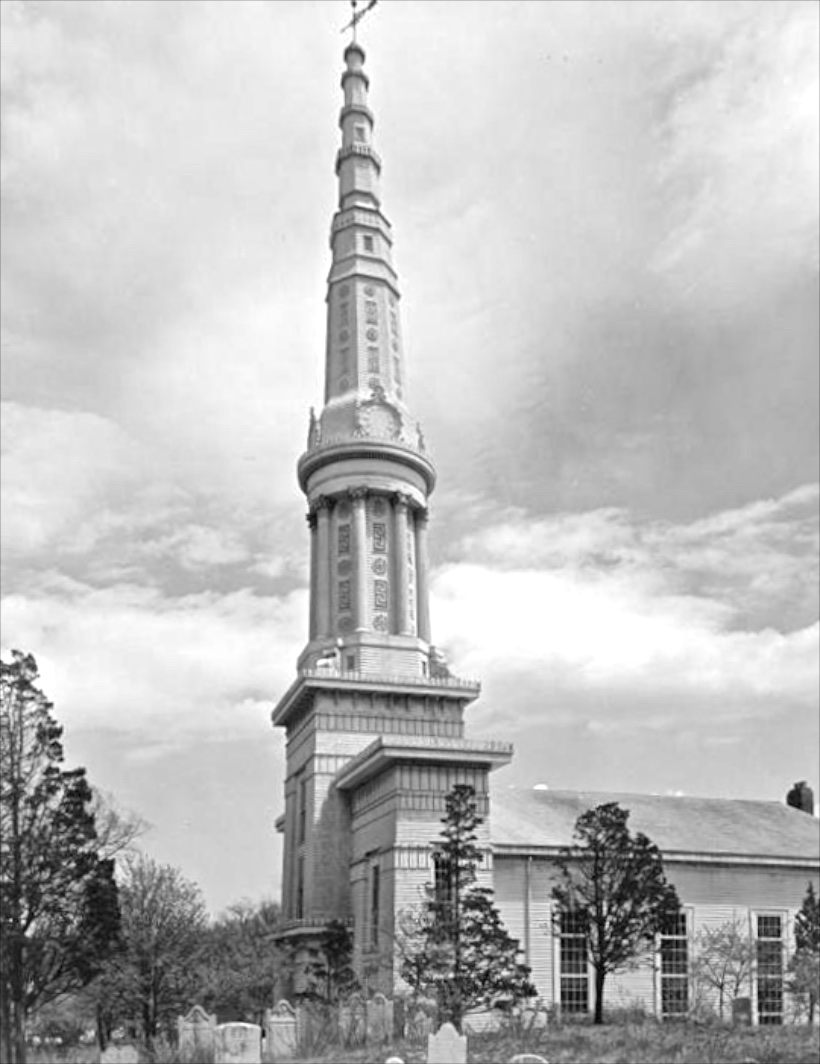
Old Whalers Church photo by C. Manley DeBevoise, from the New York Public Library Digital Collection.
—————————————–
—————————————–
—————————————–
—————————————–
——————-
Archival postcards courtesy of architect Eric Woodward.
Photographs of Old Whalers Church © Jeff Heatley.
______________________

